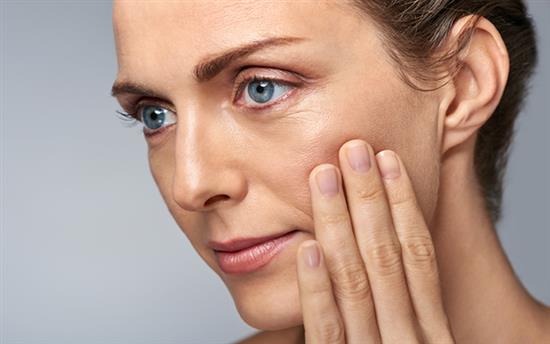
The onset of early jowls and minor skin excess along the jawline and in the cheek is usually one of the early signs of ageing of the lower face. This is a difficult area to address with non-surgical solutions since Botox does not work in this area and other options such as dermal fillers only work in reducing the impact of fine lines and are best for the deeper grooves that extend from the side of the nose down to the mouth (the nasolabial lines). Other non-surgical options such as laser treatments and radiofrequency skin tightening only produce a limited effect and any improvements do not last. Therefore, the best approach is surgery which has proven over time to consistently produce the best and most long-lasting effects. The reason for this is because surgery allows the skin and deeper tissues to be restored to their normal position.
What does a mini-facelift achieve?
A mini-facelift only addresses the jowl area and loose skin in the jawline. It does not address the laxity of skin and muscles in the neck. Furthermore, if the laxity is very severe in the jowls and jawline a mini-facelift may not be appropriate. It is therefore only useful for younger patients. The scar is limited and extends mainly in front of the ear but occasionally may have to extend for a short distance in the groove behind the ear. Various terms have been applied to this operation such as ‘mini-facelift’, ‘MACS’ lift or ‘short scar’ facelift. Essentially these are simply minor modifications of the exact technical way in which stitches are placed and no studies have shown that any technique is better than the other. The most important factor is that the procedure is appropriately tailored to suit the requirements of the patient. Of course, other adjunctive procedures can be carried out at the same time such as eyelid surgery, liposuction under the chin and laser treatments to improve skin quality. All of these additional procedures can enhance the overall effect.
What does a facelift achieve?
A facelift is more extensive since the scar is longer and will extend both in front and behind the ear into the hairline. It allows a more extensive correction of both the jawline and the lax tissues in the neck. The main difference is that if the ageing effects are more severe in the face the longer scar allows more access to the deeper tissues to produce a more effective improvement. It is, therefore, more suitable for slightly older patients. If the muscles are very lax and are causing banding in the neck an additional scar may be required in the crease under the chin. This is often called a ‘necklift’ or ‘platysmaplasty’. This is carried out at the same time as the facelift and can be part of the same procedure. Again, it is important to realise that the surgery is selected in a manner which is individual to the person rather than a ‘one procedure fits all faces’ approach. Mr Chana will discuss very carefully how the procedure will best suit your individual concerns in order that the outcome is optimised.
How do I ensure the results look natural?
Although a facelift hasn’t always enjoyed the best reputation, the modern-day facelift is an advanced procedure that uses carefully finessed techniques for subtle, natural results – making the patient look rejuvenated and refreshed, rather than as though they have ‘had work done.’
